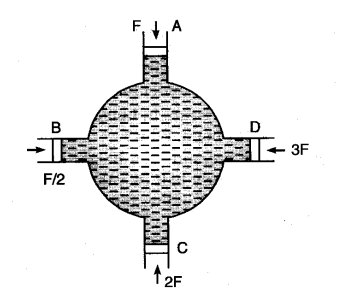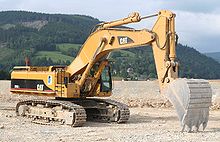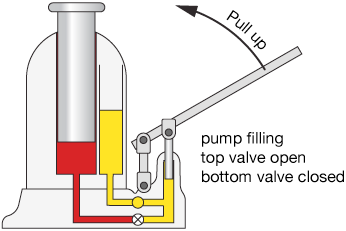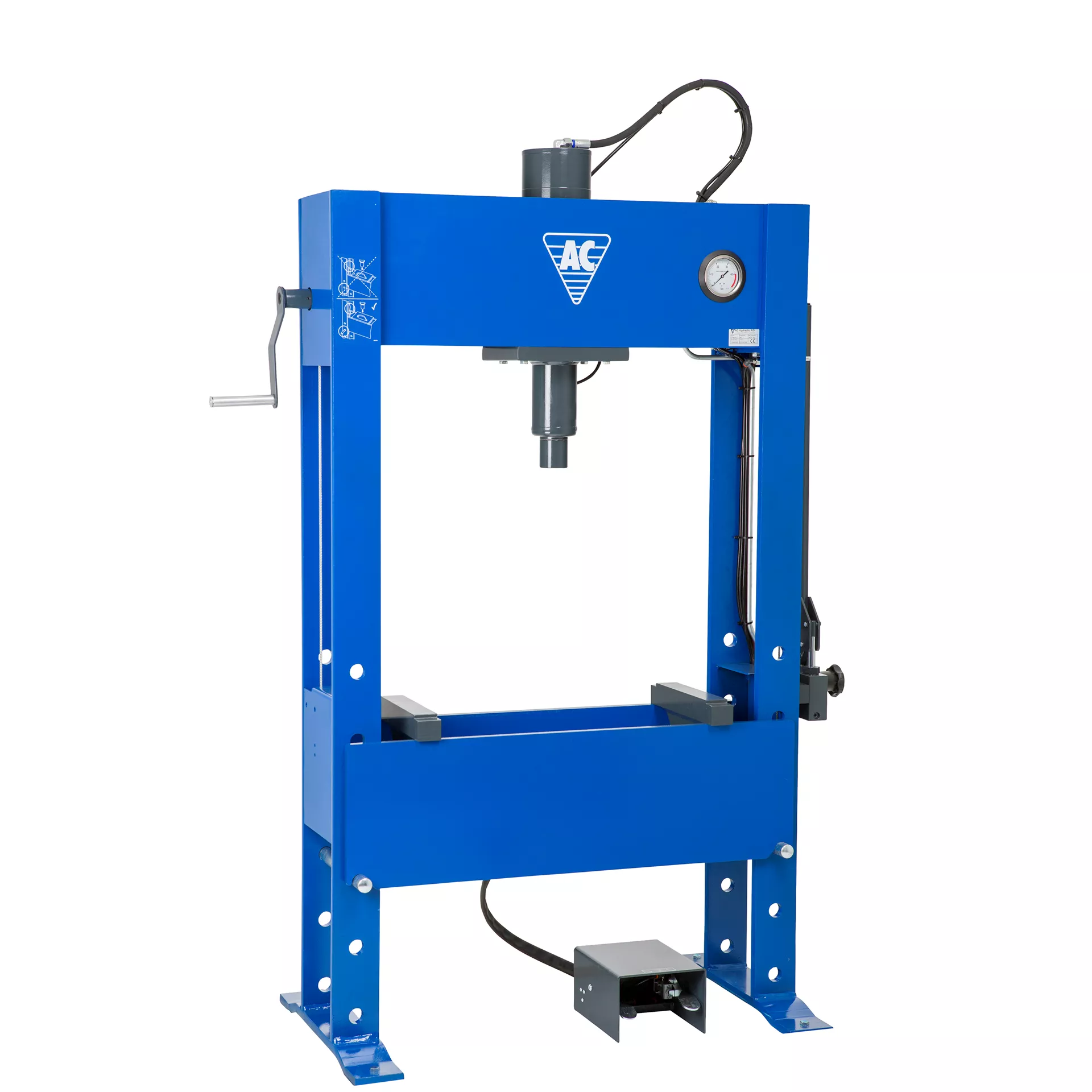Pascal's Law
Subject: Science

Overview
Pascal's law asserts that pressure generated at one place in an enclosed liquid is usually transferred in all directions throughout the liquid. Blaise Pascal, a French mathematician, presented it for the first time in 1653 BC. Hydraulic machinery, including hydraulic presses, hydraulic lifts, and hydraulic brakes, is produced using this law. Hydraulic machines are force-multiplying devices that transport fluid in flexible pipes using hydraulic cylinders and pistons. Examples of these machines are backhoes and excavators. There are many different types, sizes, and designs of hydraulic machines. Some examples of these include hydraulic presses, hydraulic jacks, hydraulic lifts, hydraulic brakes, and hydraulic jacks. Dental chairs, automobile lifts, hydraulic presses, hydraulic jacks, hydraulic brakes, and hydraulic jacks are a few examples of hydraulic machinery.

This law states that pressure generated at one point in an enclosed liquid is typically transferred in all directions throughout the liquid.

Pascal's law can be verified by using the circular tank shown in Figure, which has four pistons, A, B, C, and D. Let us assume that the sectional areas of the four pistons are a1, a2, a3, and a4, respectively. When force F1 is applied to the liquid-filled vessel, pressure is generated on the piston A's cross-section area. The pressure causes the final three pistons to move outward. This suggests that piston A is typically the source of the pressure inside the liquid. If an inward force is applied to stop the outwardly moving pistons, F2, F3, and F4, respectively, they will move in the manner described below.
\(\frac {F_1}{a_1}\) = \(\frac {F_2}{a_2}\) = \(\frac {F_3}{a_3}\) = \(\frac {F_4}{a_4}\)
Consequently, pressure generated at one point in a liquid housed in a closed vessel is dispersed evenly throughout.
Applications of Pascal's Law
Pascal's law is used in the production of many types of hydraulic machinery, such as hydraulic presses, hydraulic lifts, and hydraulic brakes.
Hydraulic Machine
Based on Pascal's law, a hydraulic machine is a force-multiplying apparatus.  One example of a hydraulic device for digging is the backhoe or excavator depicted in Figure. To move the digging portion, hydraulic cylinders and pistons are employed. The machine's upper section should bend toward the ground as the backhoe does, allowing the backhoe to sink into the earth. For this, the fluid in the flexible pipes with the black figure is pushed with the assistance of the piston, as seen in the diagram above. This causes the driver's force from the small piston to increase. and a hole has been dug.
One example of a hydraulic device for digging is the backhoe or excavator depicted in Figure. To move the digging portion, hydraulic cylinders and pistons are employed. The machine's upper section should bend toward the ground as the backhoe does, allowing the backhoe to sink into the earth. For this, the fluid in the flexible pipes with the black figure is pushed with the assistance of the piston, as seen in the diagram above. This causes the driver's force from the small piston to increase. and a hole has been dug.
Construction and Working Mechanisms of Hydraulic Machine
As seen in the figure, a hydraulic machine is constructed by connecting at least two cylinders with dissimilar cross-sectional areas. Each cylinder has a piston attached to it so that the liquid inside doesn't leak.
The hydraulic machine depicted in the figure has two pistons: A1 and A2, respectively, with respective cross-sectional areas. Similarly, when a force F1 is applied to the smaller piston, the large piston experiences an outward force F2.
Conditions are set up in a hydraulic machine so that Pascal's law can work. That is, when power is delivered through the machine's tiny piston, the F. pressure generated on the surface of the piston (P1 = \(\frac {F_1}{A_1}\)) is transmitted perpendicularly and equally in all directions by the incompressible liquid in the cylinders. Pascal's law states that the pressure produced on the small piston's (P1) surface equals the pressure produced on the large piston's (P2) surface.
Some Examples of Hydraulic Machine
Depending on what they are used for, hydraulic machines come in a variety of sizes, shapes, and designs. Below are a few of the instances.
Hydraulic Lift
The figure illustrates the hydraulic lift that the dentist uses to change the chair's height as needed during the procedure. The patient can be easily raised because of the large force exerted on the big piston's surface by the amplified force applied to the small piston attached to the chair's pedal. Similarly, the hydraulic car lift used to lift the car is shown in Figure. The compressed air passing through the compressor forces the oil in the lift's small cylinder inward, lifting the car positioned on the large piston on the opposite side. Easily lift large objects with a hydraulic lift.
Hydraulic Brake
A particular kind of brake oil is put in the pipe that connects the master cylinder and the brake cylinder in a hydraulic brake system. Both cylinders are equipped with pistons to create an airtight seal. As shown in the figure, in four-wheeled vehicles, the piston of the master cylinder is connected to the brake pedal located at the driver's foot by a lever. Likewise, as depicted in the figure, the master cylinder piston in two-wheeled vehicles is linked to the handle-mounted brake lever.
The wheels of cars have brake cylinders on them. The brake shoes or brake pads, are attached to the brake cylinder's piston. The pressure created by pushing the fluid inside the master cylinder is transferred by applying a small force to its small piston, and a large force is applied to the large piston that is connected to the brake cylinder. As a result, a fast-moving vehicle can be quickly stopped.
Hydraulic Jack
Hydraulic jacks are used to raise vehicles such as trucks, buses, cars, etc. to a specific height above the ground. A lifting piston with a large cross-sectional area and a pumping piston with a small cross-sectional area are connected, as seen in the figure. Between these two pistons is a bottom valve that only allows oil to flow in one direction, from right to left.
Comparably, a top valve is positioned to allow oil to flow from the oil reservoir to the pumping piston in a left-to-right direction. In a hydraulic jack, the lower valve opens and the upper valve closes when the releasing valve is tightened and the lever is pushed down. This results in an increase in the force applied to the jack's pumping piston and a slight push upward on the lifting piston's load. The top valve then opens and the bottom valve closes to high pressure when the lever is pulled up. Consequently, the pumping piston's cylinder is filled with oil from the reservoir. The load is then pushed upward once more during the subsequent pumping stage. It is possible to raise the load to the necessary height by continuously pushing the lever up and down.
A small force applied to the hydraulic press's small piston can press a variety of objects. The object to be pressed is held between a sizable piston and a stiff support above the piston, as shown in Figure. The hydraulic press is used to compress paper, cotton, and straw to pack them, bend metal sheets or create holes in them, and fit mechanical parts of cars.
Things to remember
- Blaise Pascal, a French mathematician, first proposed Pascal's law in 1653 BC, which states that pressure generated at one point in an enclosed liquid typically spreads out in all directions.
- Pascal's law is used in the production of hydraulic machinery, such as hydraulic presses, hydraulic lifts, and hydraulic brakes.
- Pascal's law is a fundamental principle in the production of hydraulic machinery, such as hydraulic presses, hydraulic lifts, and hydraulic brakes.
© 2021 Saralmind. All Rights Reserved.





 Login with google
Login with google